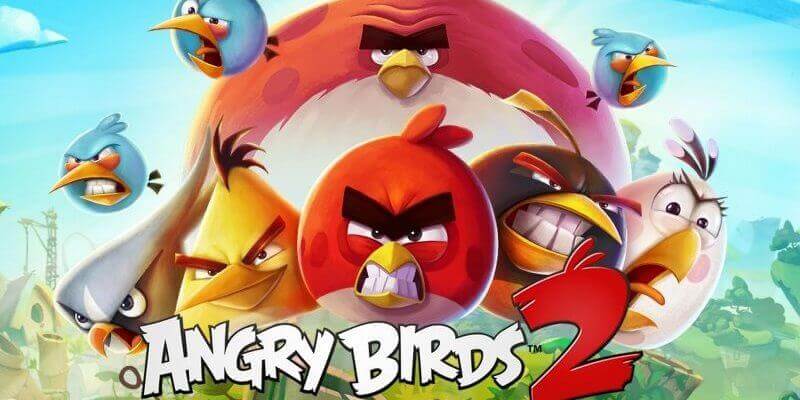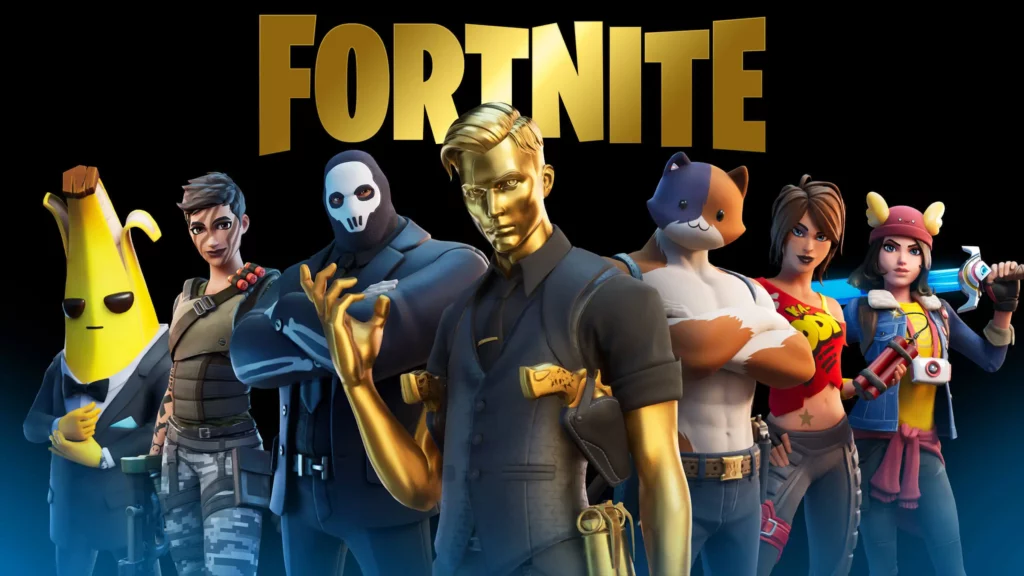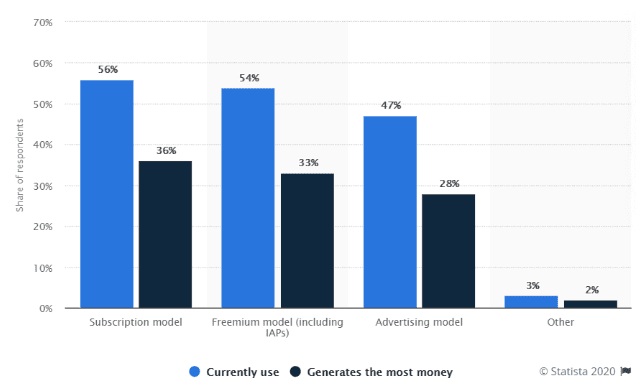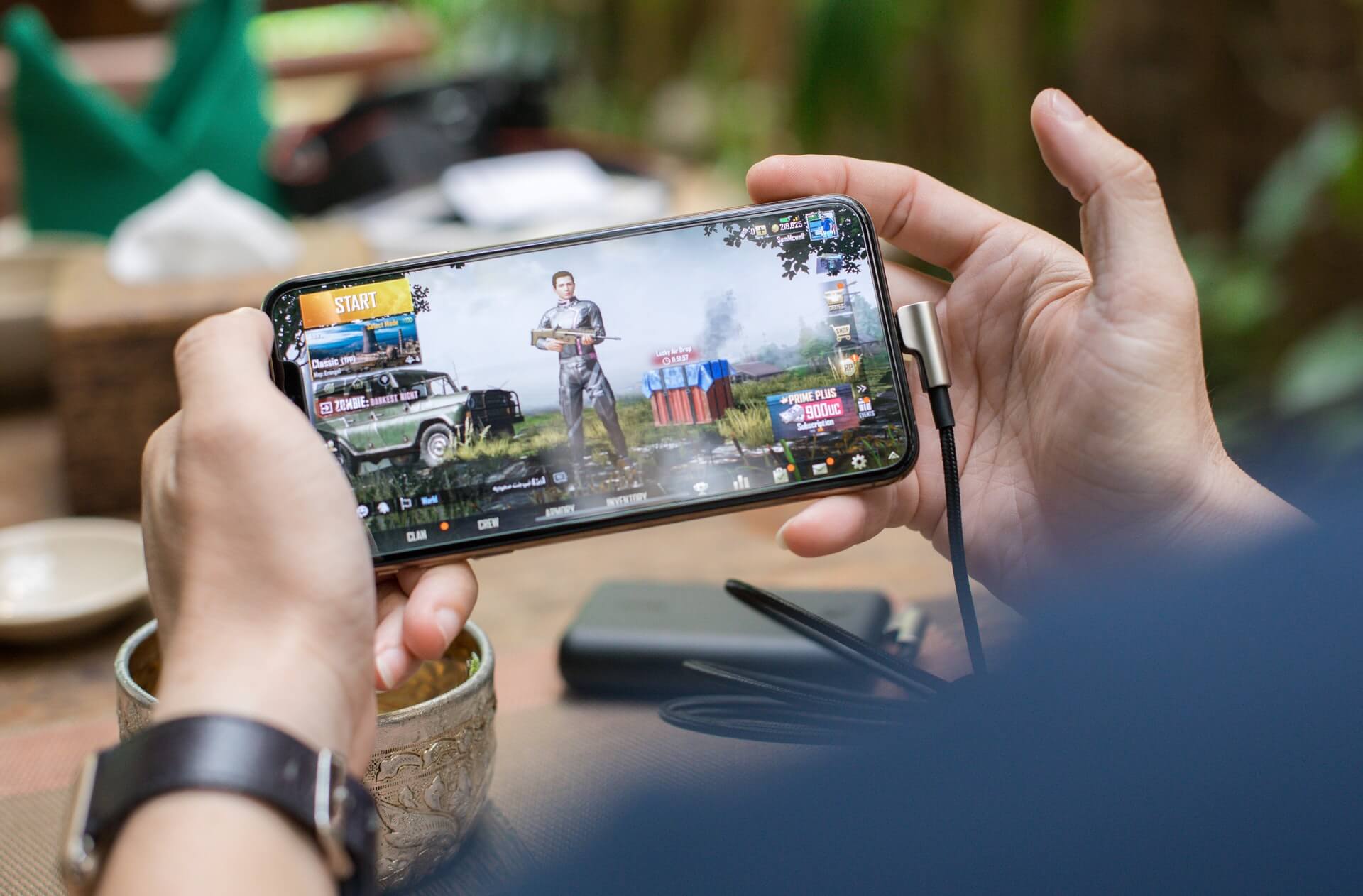The number of mobile app downloads, in general, has soared in recent years and according to Statista, the annual downloads by 2022 reached 255 billion. 22.37% of those apps are mobile games available for both iOS and Android.

Some invest in creating something unique, some just clone the popular games, some introduce their own simplified (or enhanced) versions of them, etc. In this article, we’ll talk about the game development stages, the reasons for creating something unique, and the cost of developing a mobile game.
Mobile game development stages
Where do you start the development of a mobile game? First of all, you need to define the purpose of your app or mobile game. Why do you want to create the app in the first place? From a business perspective, there are several reasons:
- You want to increase your customers’ engagement
- You want to increase brand awareness
- You want to increase sales
- You’ve got an idea that you think might become very popular. (Test out your idea before you invest too much finances into it.)
- You’re bored and want to create something. (Technically, this is a reason as well, but this usually works only if you’re learning how to develop apps yourself and want to test out your knowledge. Otherwise, your investment without a clear goal will be useless.)
1. Game design document (GDD)
Once you know why you need the app, you need to create a Game Design Document (GDD). While the word “design” might sound as if this is only about graphic design, it covers a lot more:
- General game description part:
- Game setting – where does the game take place?
- Game story – what’s your game about? Is there a story behind it? For example, Mario’s goal is to save the princess who was kidnapped by Bowser or King Koopa. Or in Zombies, Run, the story is that you’re one of the runners who need to bring home various artifacts from beyond the safe zones. The game story is an optional feature, but it helps your players to feel a part of something bigger rather than just killing their time.
- Gameplay mechanics (how does the user interact with the game) and the description of how points are earned in your app and how these points help the user (Can they be spent? Can the user set a record?)
- Description of various levels and how levels differ from each other (if there is more than one level)
- Design part:
- Wireframes design to show how all app’s screens are connected to and interact with each other
- The list that outlines all art assets that your game or app might need (art, animations, audio, etc.) and a general style guide of the look and feel (you might include examples of other apps or art pieces that you like for the designer to understand what you are looking for.)
- Business & Technical part:
- Business model (aka monetization options, including premium, freemium, ads, in-app purchases, or subscription)
- The description of the technologies that will be used for the app creation
- The description of all additional systems that the app will be relying on for logging in, analytics, push notifications, ads, marketing, etc.
Also, to be able to explain clearly what you’re expecting from designers and developers, you need to be able to answer the following questions (or at least be aware of them, so you can decide on the best course of action with your game developers):
- What platform are you targeting?
- iOS
- Android
- Computer (Windows / Mac / Linux)
- Console (PlayStation / Xbox / Wii)
- Web
- How many players?
- Single-player
- Multiplayer
- Social player (e.g. Scrabble, which connects the user with other people around the world and they take turns or Two Dots that show you how you compare against your friends on Facebook)
- Update frequency?
- Does the game need to be online all the time?
- How often will you need your users to update the game with new content, levels, or live events?
- What is your app’s language? Does it need to be localized?
- What markets are you planning to target? (App markets offer various options to publish your app in certain countries or worldwide.)
The answers to these questions will layout the foundation for developers and project managers to be able to understand what are your expectations and requirements and, as a result, will be able to estimate approximate budgets, timelines, and milestones.
2. Game prototypes
In order to test out the design’s look and feel as well as to see how the idea will work with your potential target audience, the next step is to create a playable prototype of your game for targeted platforms (for example, iOS).
What is included in the prototype?
- The general design of the game (details can be added later)
- Important mechanics that would help the user understand how to play the game
This step also takes some time, but prototypes help you identify the possible weaknesses before you invest in actual game development and mistakes that were somehow missed during the preliminary stages. For example, you can see if people can easily understand how to use your game, what levels are too difficult to pass, or how your game would work given different user behavior.
3. Game architecture design
For any kind of project, architecture is one of the most important steps that would allow your app or website to grow and scale. Considering the fact that the app market is ever-changing, opt for a modular architecture instead of a monolithic one. This would help you to introduce updates and changes more easily, making your project flexible.
The right architecture can help your project to have streamlined and optimized processes, which, in turn, will help your mobile game work faster. In an age when everyone wants almost instant gratification, even a few more seconds of wait time might hurt your user engagement rate.
From the technology side, architecture is also an important issue because different languages and servers interact with each other.
4. Mobile game implementation
A large part of prep work is done. Now the game developer needs to proceed to actual game development. The designer prepares all the artwork based on the theme that was described in the GDD, including gameplay, menus, levels as well as promotional art. The developers in the meantime develop the game logic which is based on the designed art.
5. Game testing
The testing phase is not just for looking for bugs or developer errors. The primary task of QA engineers is to make sure that the game or the app that was developed meets the requirements and is understandable to the users.
One of the useful resources for testing is user feedback. Sometimes you won’t even suspect that someone might use your app, which is why you need diverse users for the testing phase as well as professional QA engineers, who know various ways of testing your app (performance testing, unit testing, load testing, usability testing, etc.)
Mobile game technologies
There are many technologies used for the development of mobile games, but the most popular are Unity and Unreal Engine.

UNITY
Unity is the engine we use at HUSPI for a lot of our apps and games. It is versatile and easily customizable. One of the advantages of Unity is that it is also a cross-platform technology, which allows you to create apps for several platforms at the same time, using the mutual backend.
What platforms are supported?
- iOS
- Android
- Windows Phone
- Tizen OS (used mostly by Samsung)
- Fire OS (used by Amazon Kindle tablets)
How much does it cost to use Unity (as of June 12, 2020)?
- Free – for personal use (if revenue or funding is less than $100K in the last 12 months)
- $40/month for Unity Plus edition (if revenue or funding is less than $200K in the last 12 months)
- $150/month for Unity Pro edition (if revenue or funding is over $200K in the last 12 months)
- $200/month for Enterprise edition (if revenue or funding is over $200K in the last 12 months)
Usually, the price doesn’t matter if you’re using a development company since it’s the cost covered by the outsourcer (unless you would like to own your license.)
What are some games developed using Unity?

UNREAL ENGINE
The advantage of the Unreal Engine is that one does not need extensive programming skills to create a game with its help. However, at the same time, it is powerful enough to create stunning 3D graphics that win users’ attention.
What platforms are supported?
- PC (Windows / Mac / Linux)
- Consoles (PlayStation 4 / Xbox One)
- Mobile (iOS / Android)
- VR platforms
- SteamOS
- HTML5
How much does it cost to use Unreal Engine (as of June 12, 2020)?
- Free – for small projects
- 5% royalty in case your lifetime gross revenues from the product exceed $1,000,000 USD
What are some games developed using the Unreal Engine?
Mobile game development costs
How much does all of this process cost from beginning to launch and game support? The only honest and definite answer that we can tell you in this article is that it depends.
As you have seen in the first part of our article, where we talked about the development stages, creating a game requires answering a lot of questions and setting priorities. Most of the priorities involve allocating budget to that particular part of the game (for example, a custom soundtrack or just stock background music).
Game development can start from $1,500 for a simple shooter, for example, as we created for fun at HUSPI when we were testing out the abilities of Unity. What’s the top level of the price? It can be over $1,000,000.
What’s the difference between them? Let’s take a look at a comparative table below:
| A GAME THAT COSTS $1,000 | GAME THAT COSTS $1,000,000 |
|---|---|
| Made in a country, where developers’ hours are cheap (Asia, India, Philippines, etc.) | Made in a country, where you have to pay a lot per development hour (Western Europe, United States, etc.) |
| One or two still-learning students armed with a laptop and one device for testing | A large team of professionals – designers, composers, backend and frontend developers, mobile developers, QA engineers, etc. |
| Created either for one platform or cross-platform using Xamarin, Unity, or Unreal Engine (i.e. when you don’t create native apps for each of the platforms) | Native iOS and Android apps as well as major consoles, desktops, and other platforms. The game also can sync across devices providing a seamless gaming experience to the players. |
| Contains many missed bugs and crashes often | Works flawlessly and is continuously updated with bug fixes that are found along the way |
| Either no levels at all or the levels are simple and repetitive and there is no story behind the game. Designs are “borrowed” and mimicked from similar games and stock art is used. | One language only (most of the time, English) |
| Stock sound effects and animations are used. | Each character and part of the game is animated in a custom way, with special effects and sounds that are created with this particular game and story in mind. |
| One-language only (most of the time, English) | Users can choose from a number of native languages and the app’s features are localized making it available to a wider public. |
Mobile game monetization options
Okay, imagine you’ve already invested your finances in game development. How are you planning to get that investment paid back? Well, if you remember, we mentioned it briefly in the very beginning, as we were talking about the GDD – the monetization options.
According to Statista, as of June 2019, the most popular mobile app monetization and business models were the following:

Most popular mobile app business models as of June 2019, by usage and monetization [Source: Statista]
- Subscription: the game can be $0.99 per month to play. A lot of educational mobile games use this approach or gamified business services.
- Freemium: the game is free to download, install, and play, but certain features are not available in the free version. Works great as a hook because if people really like your game and see its value, it will raise the chances and desire to purchase the full version of your app.
- In-App Purchases: the game might be either free/freemium/premium, but there are certain features that can be purchased for real money.
- Advertising: least liked by the users type of monetization, but hey, it works and users don’t have to pay for the app. (Also, this dislike for ads can be a good motivator to actually purchase the premium version of the game which doesn’t have ads.)
- Other
Wondering about time-to-value?
Request a no-obligation discovery call and receive a preliminary estimate tailored to your KPIs.


